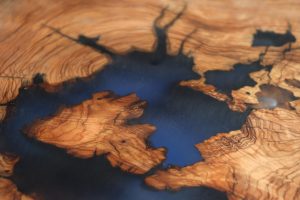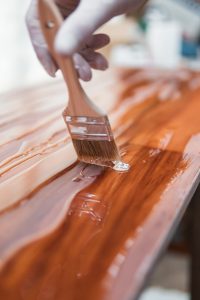 What is epoxy paint, and what is it for, its different uses indoors or outdoors, its properties, colors, and finishes? All about one of the strongest points you can find today.
What is epoxy paint, and what is it for, its different uses indoors or outdoors, its properties, colors, and finishes? All about one of the strongest points you can find today.
Here you have a product used in industrial environments since the middle of the last century. Due to its spectacular characteristics, it has spread to various fields. Using epoxy in the home offers very good results and benefits.
What Is Epoxy Paint?
Epoxy paint is high-performance paint composed mainly of epoxy resin, a type of polymer also known as polyepoxide. This polymer hardens with the addition of a catalyst; that is why in most paints of this type, you will have two containers or “components”; one is the resin and the other the same catalyst.
Epoxy paint has been used for many years in places where resistance, durability, and high protection are required. It is a traditional product in the industry, where floors, pools or tanks, and even pipes are covered. It is also used in the coating of ships and even in places as extreme as oil refineries and chemical plants.
Lately, its use has become popular in the residential field, where it is possible to use epoxy coatings and paints to paint walls, tiles, and floor coverings.
What Features Make It Special?
Among the main qualities of this paint are chemical resistance and resistance to rubbing, among others. It is suitable for industrial and commercial, sports, and domestic environments.
Resistant To Friction: the hardness of the material makes it withstand high traffic, friction, and scratches. It is a widely used paint on factory floors, workshops, and homes. This is because it maintains its shine and good condition for much longer than other paints.
Chemical Resistance remains unchanged in contact with various common chemical products, such as other types of solvents, oils, or detergents that could be spilled. What for other paints can be fatal, but it is not a drawback for epoxy.
Waterproof: As it is not affected by contact with water, the surfaces can be washed with water without inconvenience. What’s more, it retains good condition even if the piece is submerged.
Easy To Clean: Thanks to their smooth finish and not being affected by water or chemicals, they are very easy to clean while maintaining good condition and hygiene.
Durable: Epoxy is highly durable as it resists abuse, heat, water, chemicals, heavy objects, and friction. It is one of the most durable paints out there.
 How To Apply Epoxy Paint
How To Apply Epoxy Paint
One of the most common ways to apply epoxy paints is with brushes and rollers; it all depends on the size of the surface. These are the most suitable tools for indoor and outdoor painting floors and walls. The consistency and adhesion of this paint allow a good application and coverage with few coats. Only a little experience is necessary since the work can become more complicated than a simple water painting.
It is possible to paint with epoxy with a blowtorch or pneumatic gun. Still, several factors must be considered in this case, such as viscosity, material temperature, air pressure, or airless sprayers. For all these reasons, this method of paint application is recommended for professionals in the trade.
For Interior And Exterior Painting
Indoors, what can you paint with epoxy? Well… special indoor environments are humid and stain-prone sectors. That is, in those where other types of paints would be useless. These are bathrooms, kitchens, and laundry rooms. Any surface can be painted, especially those that suffer more friction and mistreatment, such as the entrance, the corridors, or the garage. It is a good option in high-traffic stores, food preparation places, restaurants, health spaces, and gyms.
Outdoors, its most widespread use may be on sports courts, where they use colored epoxy paints and a matte finish, where it needs to be resistant to friction, slip-resistant, and resistant to humidity, and the sun.
Epoxy On Different Materials
Epoxies are good products for treating different materials, even the most difficult ones, where other types of paint do not have adequate adhesion.
On ceramic tiles is the most common case. Its good adhesion, even on enameled and ceramic surfaces, makes it the indicated option to change the bathroom’s color or renovate the kitchen without work.
On Metals: It is usual to use epoxy on metal to protect it when it is exposed to high humidity, submersion, variable temperatures, traffic, or friction. There are cheaper and more flexible materials for all types of metals.
On Wood: it is necessary to prepare the surface well and use epoxy paint suitable for wood. However, special paints for wood fulfill their objective, as well as epoxy paint, at a lower cost.
On Concrete: it is perhaps the most suitable material for use, at least in the home, in the covering of floors duly treated against humidity and leveled.
Epoxy Paint Finishes And Colors
In the same way, the finishes depend on the purpose and the effects you want to achieve in the environment. The classic finishing glosses are glossy, satin, and matte.
Like most paints, they are available in a wide range of colors. This also depends on the manufacturer, finding more variety in some than others. Another special option is transparent paint, or epoxy varnish, for when you want to protect a surface without covering its original color or texture.
